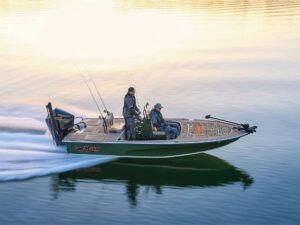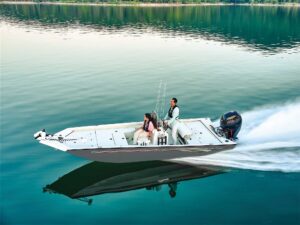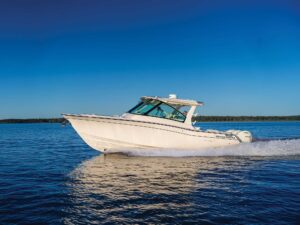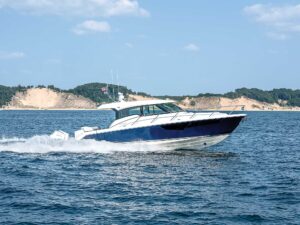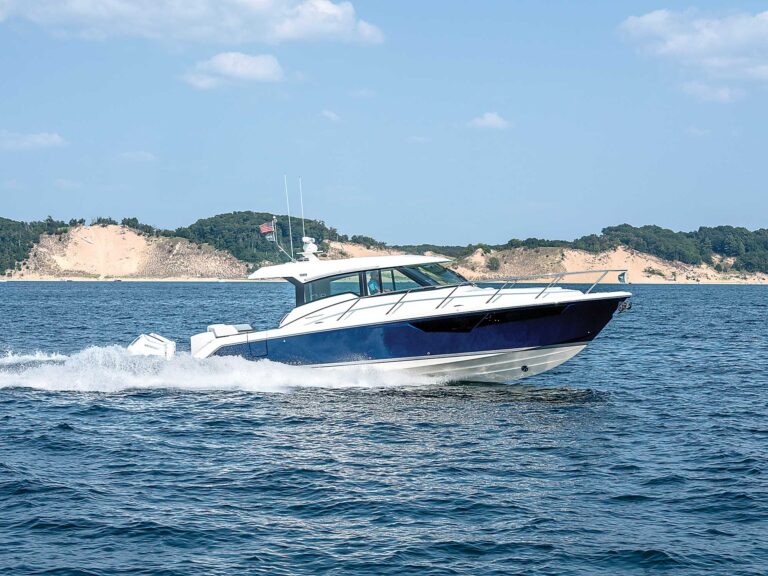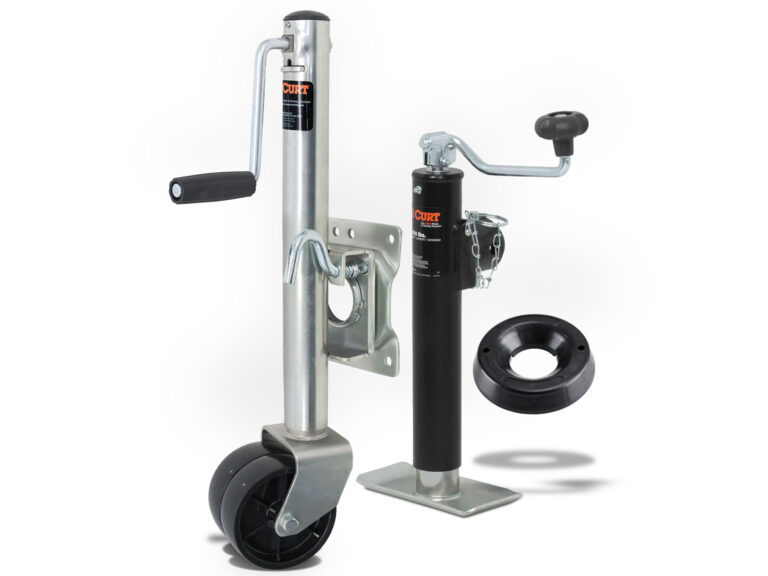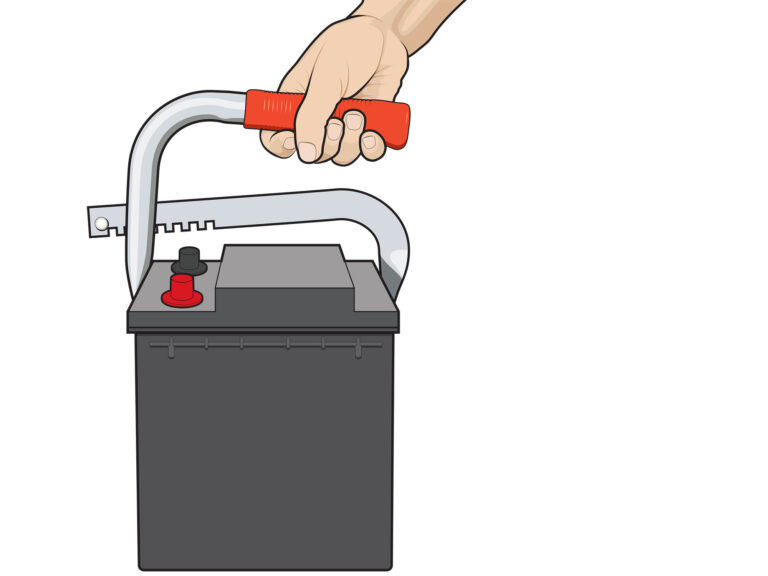Whether you want a kicker for trolling or for the redundant safety of a get-home motor, an auxiliary outboard motor paired with a single primary engine makes sense for a lot of boaters. Here are some things you should look for, whether you’re buying an auxiliary outboard or considering how to install one.
High Thrust
Most engine makers offer specialty engines with lower gear ratios, fitted with larger diameter propellers designed to provide more control at low speeds. These models range to 60 hp, designed as primary power for slow vessels such as classic pontoons. However, most engines in auxiliary service are 9.9 or 15 hp, and even smaller, non-high-thrust models can be used.
Transom Mount
Some boats, such as Walleye models, will have transoms ready to accept the direct installation of an auxiliary outboard, allowing the kicker to tilt and trim. Smaller auxiliaries may be clamped onto some transoms, but we recommend through-bolting as the most secure mounting method. If you do clamp, be sure to include a safety cable. Auxiliary engines do not float.

Bracket Mount
Larger boats and most fiberglass saltwater models will require the use of a bracket bolted to the transom to mount the auxiliary engine. Most engine brackets are spring-loaded models; the heavy spring makes it easier to raise and lower the outboard. Be sure to compare the throw of the bracket spring to the transom height at the mounting location and the shaft length of the engine before installing.
Direct Control
In many applications, especially for auxiliary outboards mounted directly on the transom, the tiller controls of the auxiliary outboard itself can handle engine starting, throttle and steering. This requires the skipper to sit or stand aft in the corner of the boat in which the kicker is installed.
Remote Control
Many small engines can be fitted with remote controls, just like the big engine. In these installations, the tiller handle is removed from the outboard, making for a cleaner, more compact installation, and the throttle can be placed at the boat’s helm. Steering can be accomplished by using the nonrunning (main) motor as a rudder, having a mate steer, or fitting a mechanical or electric steering system.
Shaft Length
Just like your primary engine, your auxiliary must be installed so that its anti-ventilation plate is even with the boat’s bottom. Because of your boat’s V shape, an auxiliary mounted to the side of your primary engine will need a shaft length that matches the transom height at the mounting location rather than the maximum transom height.
Weight
Be cautious of the added weight of an auxiliary outboard. Too heavy a motor can make a small boat unsafe or cause listing and drainage problems aboard larger boats. Place sandbags or buckets of water near the installation location to replicate the weight, and then see how it affects your boat.
Quick Tip: Wear the engine kill-switch lanyard when operating an auxiliary outboard.
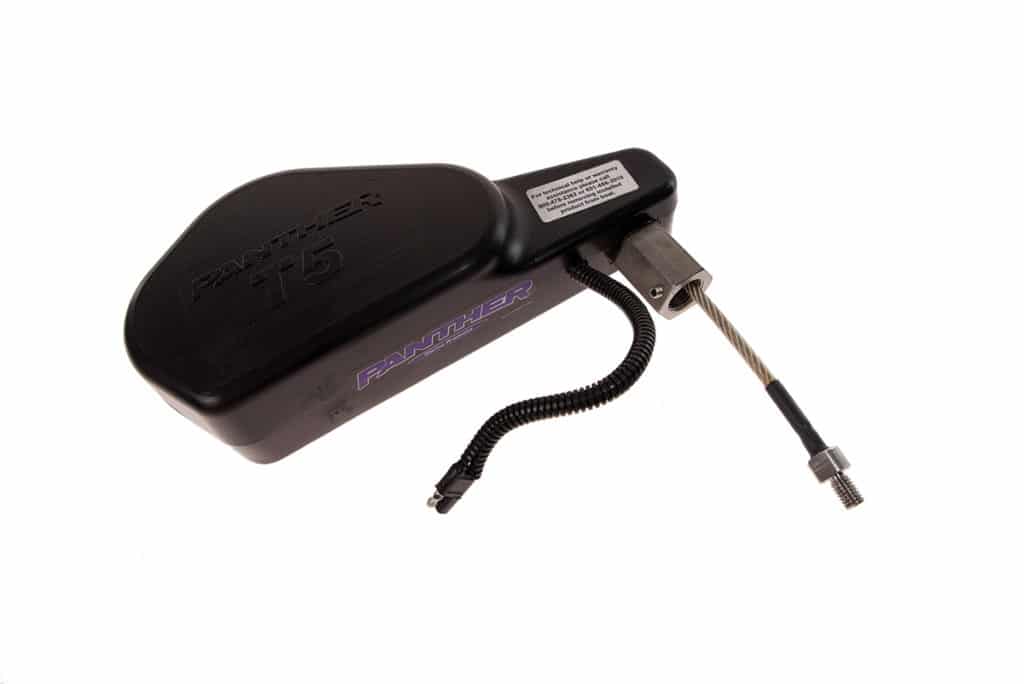
Panther Marine Products’ T4 and T5 steering systems are widely used and can be fitted to many brands of small outboards. Servo-controlled, these electric systems can be wired or wireless. Available in fresh- and saltwater models starting at $499; panthermarineproducts.com. Marine Tech Products

